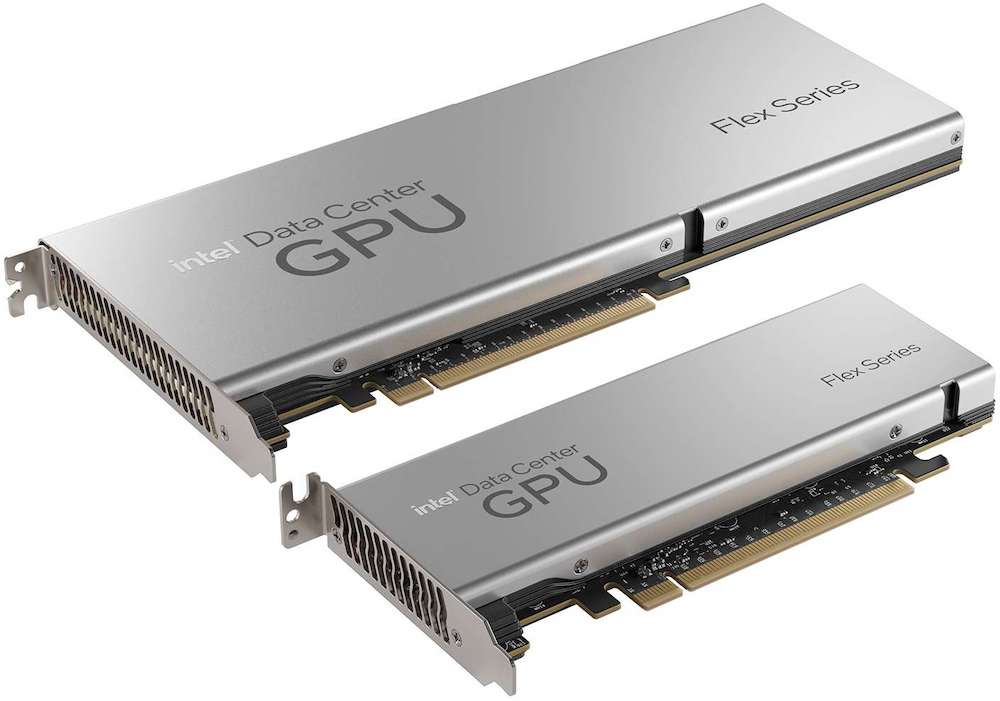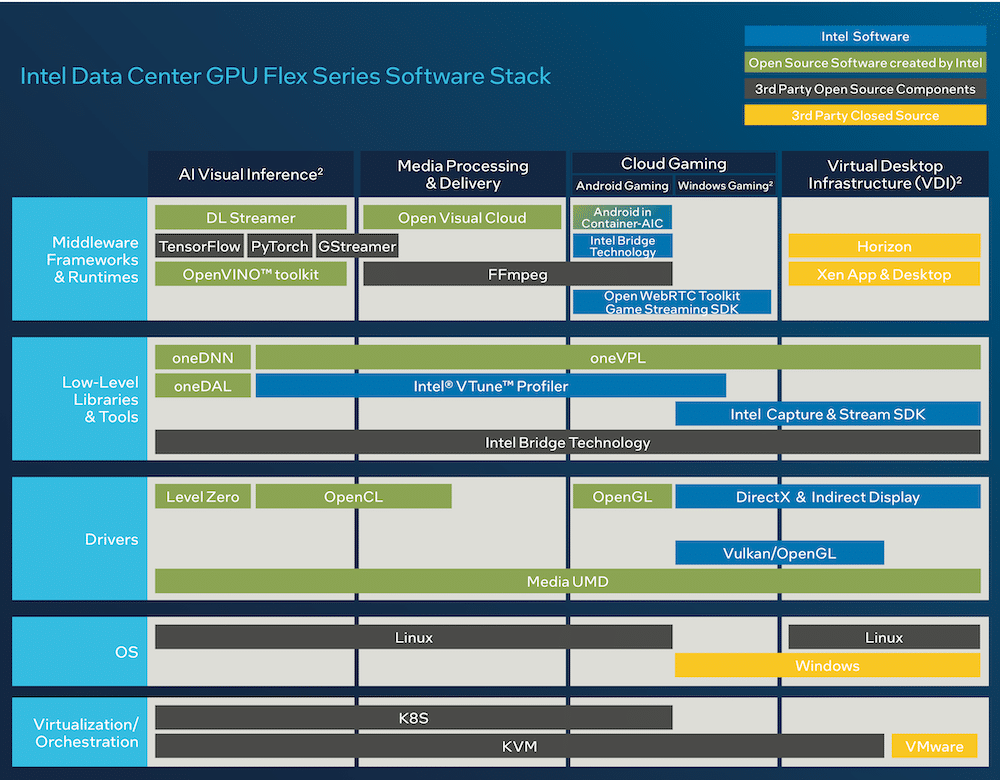Intel has introduced the Intel Data Center GPU Flex Series (formally code-named Arctic Sound-M), designed to meet the requirements for intelligent visual cloud workloads. Initially announced in May, the Flex Series GPU is a single graphics processing solution built to handle a wide range of workloads without compromising performance or quality.
Intel has introduced the Intel Data Center GPU Flex Series (formally code-named Arctic Sound-M), designed to meet the requirements for intelligent visual cloud workloads. Initially announced in May, the Flex Series GPU is a single graphics processing solution built to handle a wide range of workloads without compromising performance or quality.
Delivering 5X media transcode throughput performance and up to 68 simultaneous cloud gaming streams, the new GPU helps lower and optimizes the total cost of ownership for diverse cloud workloads like media delivery, cloud gaming, AI, metaverse, and other emerging visual cloud use cases.
Jeff McVeigh, Intel vice president and general manager of the Super Compute Group, explained:
“We are in the midst of a pixel explosion driven by more consumers, more applications, and higher resolutions. Today’s data center infrastructure is under intense pressure to compute, encode, decode, move, store, and display visual information. Intel Flex Series GPU is a breakthrough design that uniquely solves today’s computing demand while providing flexibility and scalability for the immersive experiences of tomorrow.”
Jeff has a launch video that we’ve shortened for those who want the highlights.
Intel Data Center GPU Flex Series
The Flex Series GPUs address quality, density, and latency requirements. With the industry’s first hardware-based AV1 encoder in a data center GPU and, according to Intel, provides five times media transcode throughput performance and two times decode throughput performance at half the power of competitive solutions. The new GPU delivers more than 30 percent bandwidth improvement for a significant total cost of ownership (TCO) savings and broad support for popular media tools, APIs, frameworks, and the latest codecs.
Powered by Intel’s Xe-HPG architecture and backed by an ecosystem of hardware vendors and software developers, these GPUs provide flexible scaling of AI inference workloads from media analytics to smart cities to medical imaging between CPUs and GPUs without locking developers into proprietary software.
Media processing and delivery, AI visual inference, cloud gaming, and desktop virtualization are increasing in data centers. As a result, based on results from multiple researchers, the data center GPU silicon market segment for visual cloud is projected to reach $15 billion by 2026. That rapid increase comes to an industry primarily beset by dependence on proprietary, licensed coding models, like CUDA for GPU programming.
The Flex Series GPU solution stack overcomes these limitations while delivering significant advantages over alternative solutions, improving flexibility, scalability, and power consumption. The Intel GPU can result in a lower TCO for solution providers by supporting more subscribers with fewer servers.
The software stack is enabled by one API, the productive path for accelerated computing. This single stack relieves developers of the burden of proprietary programming models, allowing users to develop open, portable code that takes advantage of various combinations across Intel CPUs and GPUs.
Up to four Xe Media Engines power the Flex Series GPU media architecture and focus on the modern data center’s highest stream density demands without compromising quality. The Intel Flex GPU delivers five times media transcode throughput and two times decode throughput at half the power (Intel Flex Series 140 GPU compared to NVIDIA A10). It delivers up to 36 streams 1080p60 transcode throughput and eight streams of 4K60 transcode throughput per card. When scaled to 10 cards in a 4U server configuration, the Intel Flex GPU supports up to 360 streams of HEVC-HEVC 1080p60 transcode throughput.
The Flex Series GPU’s hardware-based, open-source AV1 encoder delivers more than 30 percent bandwidth savings. The media engine improves performance for various industry codecs, including HEVC, AVC, and VP9. Leveraging Intel Deep Link Hyper Encode feature, the 140 half-height with two devices on a single card meets the industry’s one-second delay requirement while providing 8K60 real-time transcode. This capability is available for AV1 and HEVC HDR formats.
The explosive growth of cloud gaming created the need for more flexible solutions to maximize simultaneous game streams for users. The Flex Series GPU is built for high gameplay quality, delivering an unparalleled gaming experience across different devices, and is validated on nearly 90 of the most popular Google Play Android game titles. For example, a single Flex Series 170 GPU can achieve up to 68 streams of 720p30, while a single Flex Series 140 GPU can achieve up to 46 streams of 720p30 (measured on select game titles) and when scaled with six Flex Series 140 GPU cards, it can achieve up to 216 streams of 720p30.
The Open Software Stack provides developers access to a comprehensive software stack that combines open-source components and tools to effectively realize the Flex Series GPU capabilities for visual cloud workloads, including support for oneAPI and OpenVINO. Intel’s oneAPI tools allow developers to deliver accelerated applications and services, including the Intel oneAPI Video Processing Library (oneVPL), Intel VTune Profiler, and others.
Availability
Systems featuring Flex Series GPUs will be available from global providers, including Dell Technologies, HPE, H3C, Inspur, Lenovo, and Supermicro. Solutions with the Flex Series GPU will ramp over the coming months, starting with media delivery and Android cloud gaming workloads, followed by Windows cloud gaming, AI, and VDI workloads10.
Click the link for more information on the Intel Data Center GPU Flex Series.
Engage with StorageReview
Newsletter | YouTube | Podcast iTunes/Spotify | Instagram | Twitter | TikTok | RSS Feed



